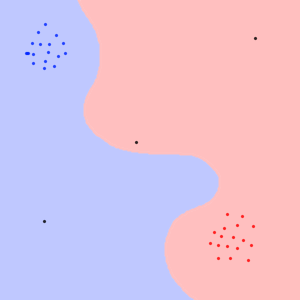I trained a simple CNN on the MNIST database of handwritten digits to 99% accuracy. I'm feeding in a bunch of handwritten digits, and non-digits from a document.
I want the CNN to report errors, so I set a threshold of 90% certainty below which my algorithm assumes that what it's looking at is not a digit.
My problem is that the CNN is 100% certain of many incorrect guesses. In the example below, the CNN reports 100% certainty that it's a 0. How do I make it report failure?
My thoughts on this: Maybe the CNN is not really 100% certain that this is a zero. Maybe it just thinks that it can't be anything else, and it's being forced to choose (because of normalisation on the output vector). Is there any way I can get insight into what the CNN "thought" before I forced it to choose?
PS: I'm using Keras on Tensorflow with Python.
Edit
Because someone asked. Here is the context of my problem:
This came from me applying a heuristic algorithm for segmentation of sequences of connected digits. In the image above, the left part is actually a 4, and the right is the curve bit of a 2 without the base. The algorithm is supposed to step through segment cuts, and when it finds a confident match, remove that cut and continue moving along the sequence. It works really well for some cases, but of course it's totally reliant on being able to tell if what it's looking at is not a good match for a digit. Here's an example of where it kind of did okay.
My next best option is to do inference on all permutations and maximise combined score. That's more expensive.







